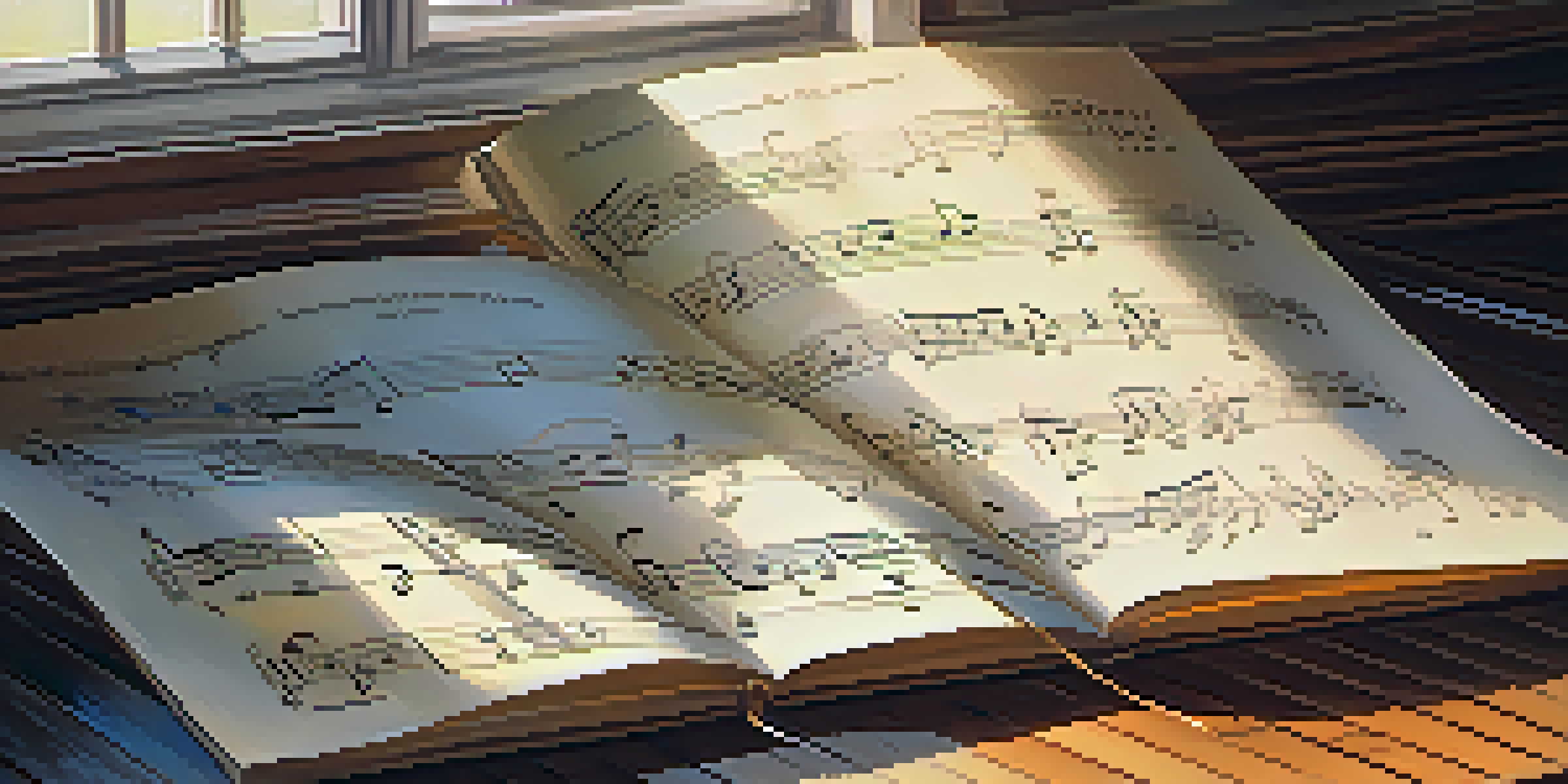Note Values Explained: Whole, Half, Quarter, and More

What Are Note Values and Why Do They Matter?
Note values are fundamental to reading and understanding music. They tell us how long to hold each note when playing or singing. Without these values, music would be a chaotic jumble of sounds without rhythm or structure.
Music is the shorthand of emotion.
Think of note values as the building blocks of musical timing. Just like a recipe requires specific measurements for each ingredient, music needs precise note values to create harmony. This ensures that everyone playing the same piece stays in sync.
Understanding these values can enhance your appreciation of music, whether you're a musician or a listener. The next time you hear a song, pay attention to how the different note values contribute to its overall feel and rhythm.
Whole Notes: The Foundation of Rhythm
A whole note is the longest single note value, typically held for four beats. It looks like an open oval without a stem, making it easy to spot in sheet music. This note serves as the foundation for understanding other note values.

Imagine a whole note as a deep breath in a conversation—it holds a significant space and gives time for everything that follows. When played, it creates a sense of calm and stability that other notes can build upon.
Note Values Define Musical Timing
Note values are essential for understanding how long to hold each note, creating rhythm and structure in music.
In many pieces of music, whole notes often mark the beginning of a passage or a moment of rest. They provide a strong anchor point, allowing other notes to shine as they come in and out of the rhythm.
Half Notes: A Step Down in Duration
Half notes are worth two beats each and are represented by an open oval with a stem. They can be thought of as a shorter breath compared to a whole note, still significant but allowing for quicker transitions.
If you can talk, you can sing. If you can walk, you can dance.
Using half notes creates a sense of movement in music, bridging the gap between whole notes and shorter values. They add dynamics and can help to build excitement as a piece progresses.
In a typical measure, you might see two half notes fill the same space as a whole note. This flexibility allows composers to craft more nuanced rhythms, keeping the music engaging and lively.
Quarter Notes: The Pulse of the Beat
Quarter notes divide the beat into even smaller segments, each lasting one beat. With a filled-in note head and a stem, they are the backbone of many musical styles, providing a steady pulse.
Think of quarter notes as the heartbeat of a song—steady and reliable, they keep everything moving forward. They are often used in both melody and accompaniment, ensuring that all parts of the music stay connected.
Rests Create Balance and Expression
Rest values are crucial in music, representing moments of silence that enhance the emotional depth and flow of a piece.
In a measure, you could fit four quarter notes where one whole note would go. This versatility allows for intricate rhythms and patterns, making quarter notes a favorite for many composers.
Eighth Notes: Doubling the Energy
Eighth notes take the rhythm a step further by dividing each beat into two, resulting in a faster-paced feel. They look similar to quarter notes but have an additional flag on their stem, marking them as quicker.
Picture eighth notes as a quick exchange in a lively conversation, where ideas bounce back and forth rapidly. They inject energy into the music, propelling it forward and adding excitement.
In a measure, you can fit eight eighth notes, allowing for complex rhythms and syncopation. This flexibility makes them essential for genres that rely on fast tempos and intricate patterns.
Sixteenth Notes: The Fast Track of Rhythm
Sixteenth notes further divide the beat into four, making them a quick burst of sound that lasts only half a beat. They are represented by a filled note head with two flags, signaling their rapid pace.
Think of sixteenth notes as a rapid-fire exchange—like a game of ping-pong where the ball is constantly in motion. They create a sense of urgency and can elevate the intensity of a musical piece.
Mastering Rhythm Enhances Appreciation
Understanding note values allows musicians and listeners alike to appreciate and engage with music on a deeper level.
You can fit sixteen sixteenth notes in a measure, enabling musicians to create intricate rhythmic patterns. This level of detail is particularly popular in genres like classical and jazz, where nuance is key.
Rest Values: The Importance of Silence
Just as important as note values are rest values, which indicate periods of silence in music. Each type of rest corresponds to a note value, providing a balance of sound and silence within a piece.
Think of rests as the pauses in a conversation, allowing for reflection and emphasis on what was just said. They help to create tension and release, guiding the listener’s emotional journey.

Understanding rest values is crucial for musicians, as they dictate when to play and when to hold back. This knowledge enhances the overall performance, making the music more expressive and engaging.
Putting It All Together: The Rhythm of Music
As you become familiar with note values, you'll start to see how they work together to create rhythm in music. Each value contributes a different layer, helping to build a cohesive sound.
Consider a cake, where each layer adds flavor and texture. Note values are the ingredients that blend into the final piece, working in harmony to create a delightful musical experience.
By understanding and mastering these note values, you can enhance your playing or appreciation of music. Whether you're composing or just enjoying a song, this knowledge enriches your connection to the art form.